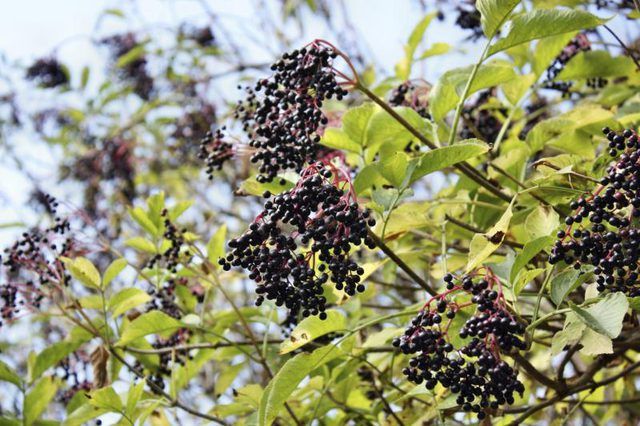Bulbs
Flower Basics
Flower Beds & Specialty Gardens
Flower Garden
Garden Furniture
Garden Gnomes
Garden Seeds
Garden Sheds
Garden Statues
Garden Tools & Supplies
Gardening Basics
Green & Organic
Groundcovers & Vines
Growing Annuals
Growing Basil
Growing Beans
Growing Berries
Growing Blueberries
Growing Cactus
Growing Corn
Growing Cotton
Growing Edibles
Growing Flowers
Growing Garlic
Growing Grapes
Growing Grass
Growing Herbs
Growing Jasmine
Growing Mint
Growing Mushrooms
Orchids
Growing Peanuts
Growing Perennials
Growing Plants
Growing Rosemary
Growing Roses
Growing Strawberries
Growing Sunflowers
Growing Thyme
Growing Tomatoes
Growing Tulips
Growing Vegetables
Herb Basics
Herb Garden
Indoor Growing
Landscaping Basics
Landscaping Patios
Landscaping Plants
Landscaping Shrubs
Landscaping Trees
Landscaping Walks & Pathways
Lawn Basics
Lawn Maintenance
Lawn Mowers
Lawn Ornaments
Lawn Planting
Lawn Tools
Outdoor Growing
Overall Landscape Planning
Pests, Weeds & Problems
Plant Basics
Rock Garden
Rose Garden
Shrubs
Soil
Specialty Gardens
Trees
Vegetable Garden
Yard Maintenance
What Is an Elderberry Bush?
What Is an Elderberry Bush?. The elderberry bush (Sambucus spp.) is a fruit-bearing, multi-stemmed deciduous shrub native to eastern North America. Elderberries will grow in U.S. Department of Agriculture hardiness zones 3 to 11. The plant produces clusters of round, purplish-black berries that are relished by songbirds. Raw elderberries have an...

The elderberry bush (Sambucus spp.) is a fruit-bearing, multi-stemmed deciduous shrub native to eastern North America. Elderberries will grow in U.S. Department of Agriculture hardiness zones 3 to 11. The plant produces clusters of round, purplish-black berries that are relished by songbirds. Raw elderberries have an unpleasant astringent taste, but cooked elderberries can be made into tasty pies, jellies or wine.
Growth Habit
Elderberry plants can grow into a small tree exceeding 15 feet tall, with a spread matching their height. Wild elderberry bushes propagate from seeds, typically spread by birds, and the plants also form dense thickets by raising suckers from their shallow root systems. The plants grow feathery compound leaves up to a foot long, made up of up to nine leaflets that grow on opposite sides of the leaf stem. The plants produce tiny star-shaped white flowers in spring and summer, arranged in showy circular flower clusters up to 10 inches across. Each flower in the cluster will develop into a berry thatís up to 1/4 inch in diameter.
Culture
Elderberries do best in full sun but can tolerate partial shade. They are not fussy about soil pH and can grow in acidic or alkaline soils. Elderberries do best in moist, well-drained soil but can tolerate dry spells. Cultivated and wild varieties can be propagated from seeds or by transplanting suckers or cuttings. Plant elderberries in the spring, spacing the plants 6 to 10 feet apart. Fertilize annually each spring with a half-pound of 10-10-10 fertilizer for each year of the plantís age. If you grow elderberry bushes for their fruit, you need to plant at least two different varieties for cross-pollination.
Pruning and Weeding
Elderberry bushes send up new canes each year. The canes are most fruitful in their second and third years and should be pruned away after their third year to make room for younger canes. Prune old, broken or dead canes in late winter or early spring while the plants are still dormant. Elderberries are shallow-rooted, so you must pluck weeds by hand or spread mulch around the plant to discourage weed growth.
Pests and Diseases
Elderberries are resistant to most, but not all, pests and diseases. Birds are by far the worst pest, stripping berries as soon as they ripen. Covering bushes with netting is the most effective defense. The main symptom of insect and disease infestations is unseasonable wilting and death of canes. The main control methods for insect pests and diseases are to prune away and burn infested and dead canes and rip out all wild elderberry plants within 100 feet of your cultivated elderberry patch.
Preparing Elderberries
Elderberries ripen in late August through early September. Pick entire clusters of berries and strip the berries from the stems. Place the berries in hot water and let them simmer for 15 minutes to cook the berries. Use the cooked berries in pies or place the cooked berries in a cheesecloth berry bag and squeeze out the juice.